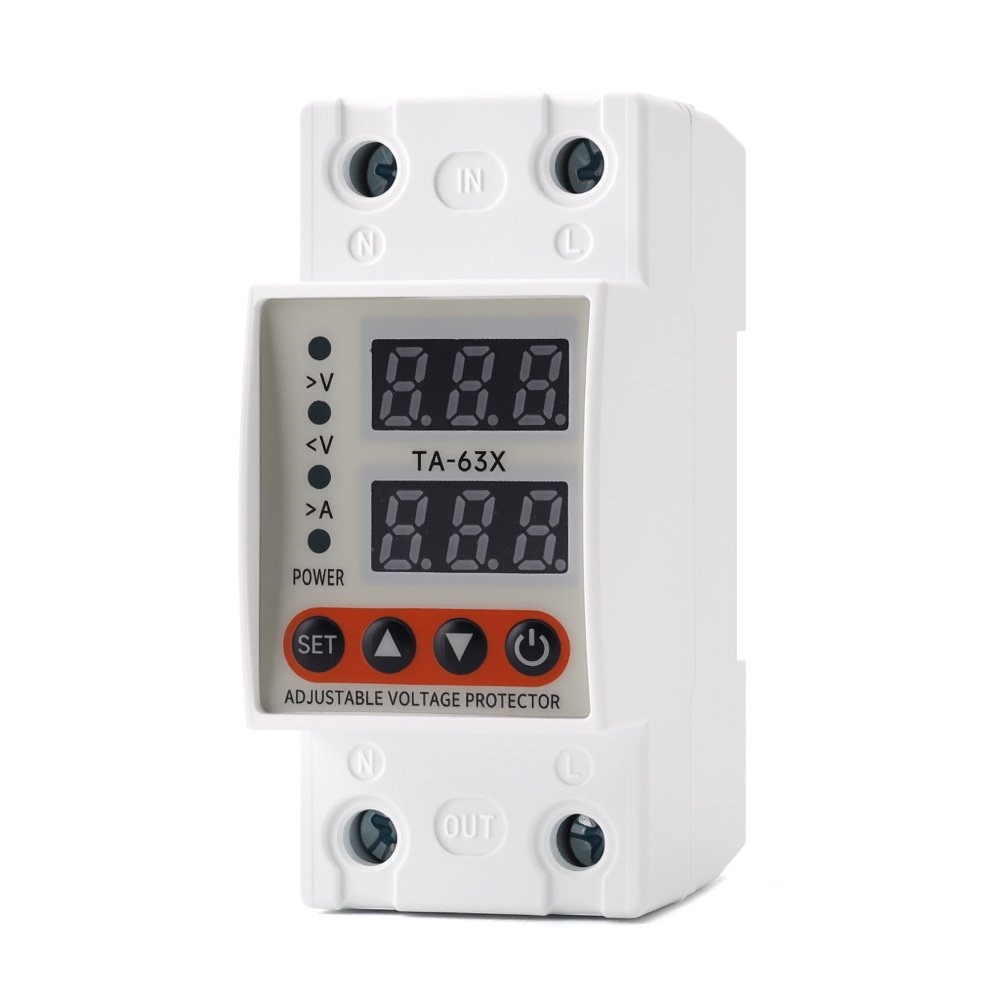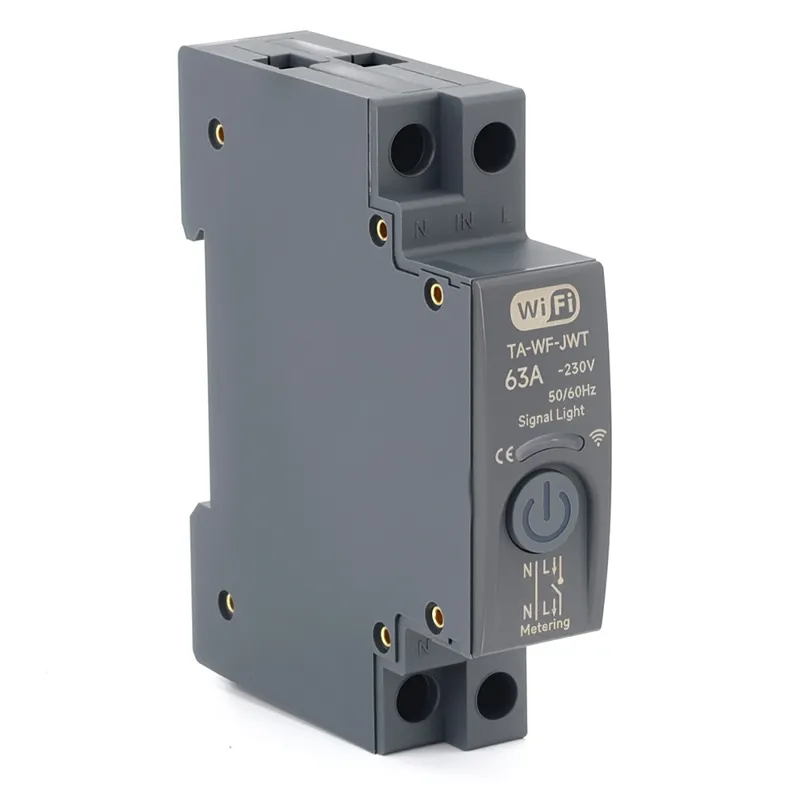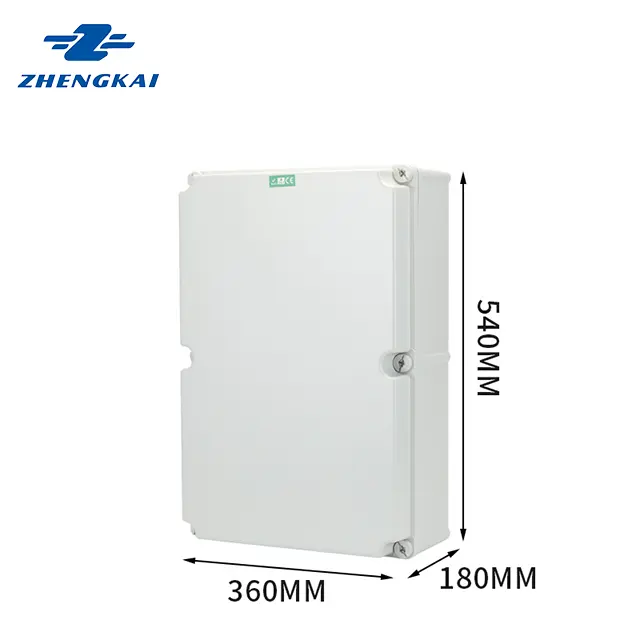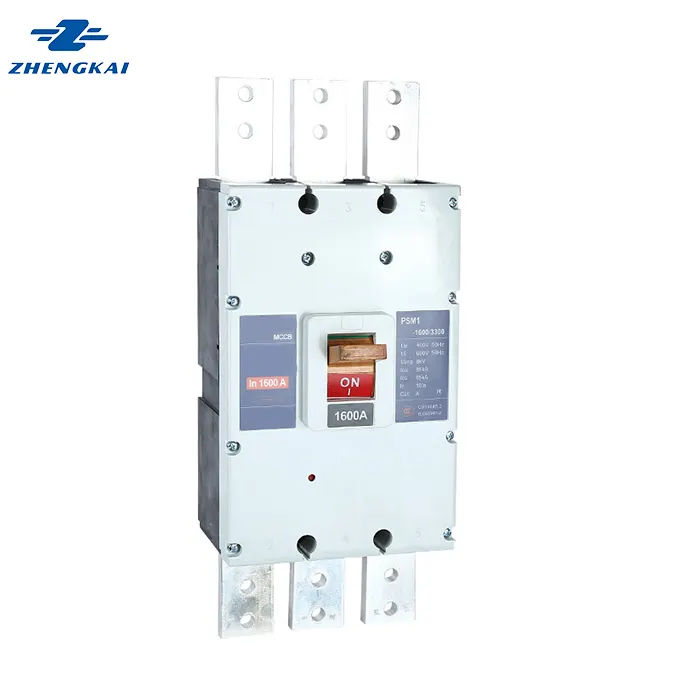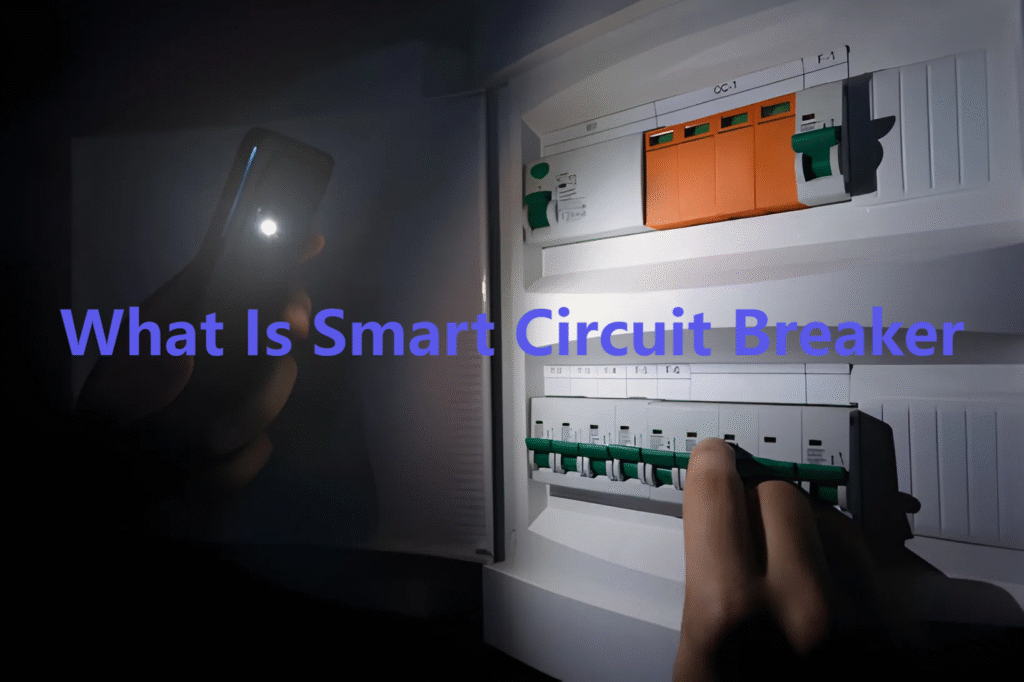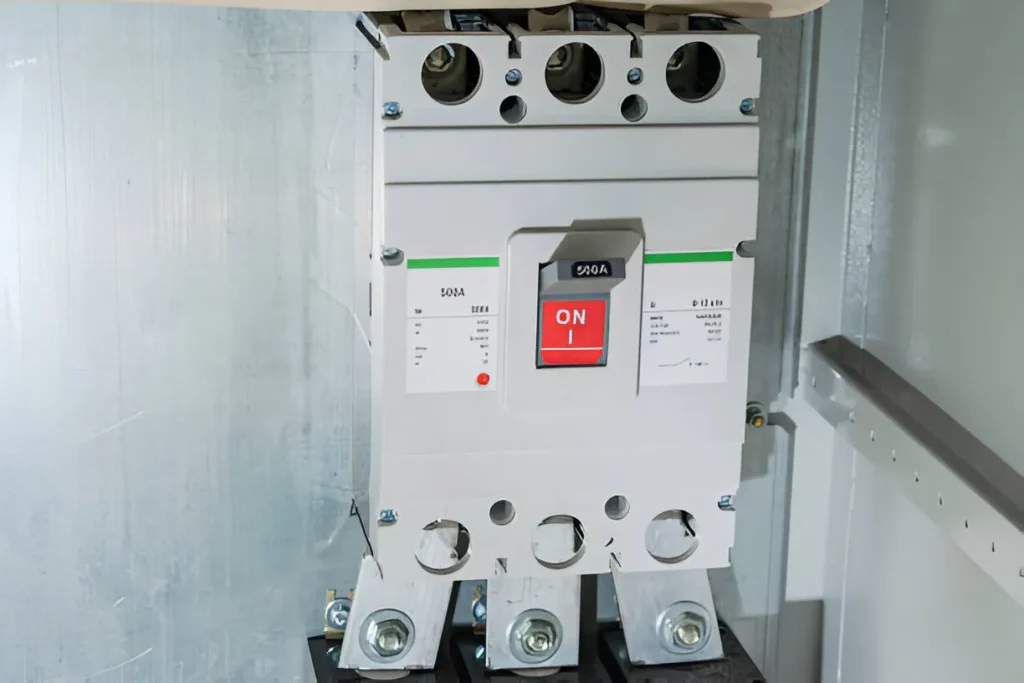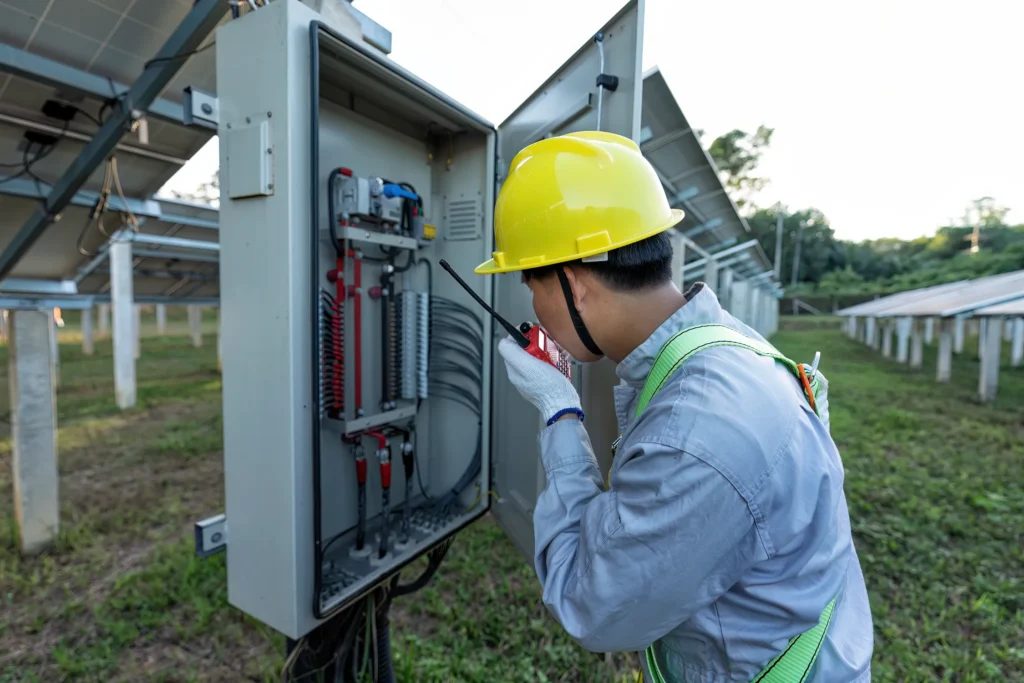When choosing a waterproof electrical junction box, it is important to make sure that you get the right type for the application that you want.
What type of waterproof junction box do I need?
Choosing the right waterproof junction box hinges on two factors: environmental conditions and the box’s IP rating (a code indicating protection against dust and water). For example, IP65 boxes resist rain but aren’t submersible, while IP68 units can handle prolonged underwater use.
Material matters, too: plastic suits mild outdoor settings, while stainless steel or fiberglass works for harsh environments like factories or coastal areas. Avoid common mistakes—using indoor-rated boxes outdoors or ignoring submersion limits—as these lead to failures like those shown in the photo. Always check manufacturer guidelines and local codes for compliance.
What is an IP rating?
An IP rating serves as a standardized classification system for devices, helping users understand their environmental resilience. These ratings – often labeled as “Ingress Protection” codes – quantify how effectively a product’s housing blocks solid particles and liquid penetration.
The two-digit format (e.g., IP68) reveals specific protective capabilities:
- First Digit (Solids Defense):Ranges from 0-6, indicating resistance to objects from accidental finger contact (lower numbers) to complete dustproof sealing at IP6. A vacuum cleaner’s dust tolerance illustrates this scale – higher values guarantee no fine particulate infiltration.
- Second Digit (Liquid Resistance):Spans 0-9K, measuring waterproof effectiveness. Lower numbers handle light sprays, while IPX8 signifies survival during prolonged underwater immersion. Kitchen appliance ratings demonstrate this progression – a blender might need splash resistance, whereas underwater lighting requires maximum waterproofing.
Manufacturers use this code to specify safe usage environments. A smartphone with IP67 withstands beach sand (6-level solids protection) and 30-minute freshwater submersion (7-level liquid defense). Industrial machinery ratings prioritize dust exclusion, while outdoor cameras balance both metrics for weather resistance.
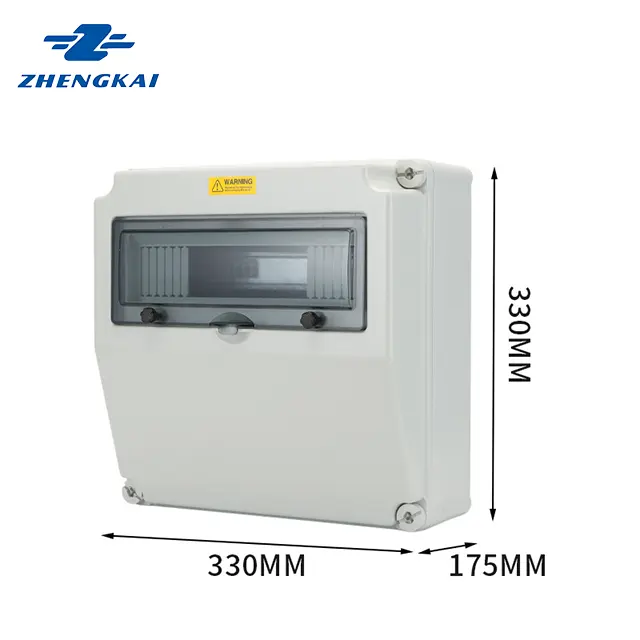

How do you waterproof an electrical box?
Seasoned electricians frequently encounter DIY electrical projects where homeowners attempt flawed waterproofing methods. Common but ineffective approaches include:
- Wrapping boxes in plastic bags
- Applying silicone sealant around edges
- Coating surfaces with waterproof paints
- Using PVA glue as a sealant
True waterproofing isn’t achievable through makeshift fixes. Manufacturers design enclosures to meet specific IP certification standards, which define their built-in resistance to moisture and debris.
How do you install a Waterproof Electrical Junction Box?
Always start with the manufacturer’s installation guidelines. If physical instructions are missing, search online using the product’s brand and model number to access digital manuals or installation videos tailored to your specific unit.
Location Dictates Technique
For boxes facing constant weather exposure (e.g., garden lighting or pool equipment):
- Avoid top-mounted cable entry – even with waterproof grommets, gravity pulls water downward, increasing seepage risk.
- Opt for side or bottom entry points to exploit natural water runoff paths.
Why Positioning Matters
Water naturally flows downward, so top-entry setups act like funnels during rain. A junction box installed under a dripping gutter, for example, needs side-entry cables angled to divert moisture away. Many manufacturers explicitly warn against top-entry designs for outdoor applications, regardless of waterproof ratings.
Pro Tip
Test your plan before finalizing:
- Temporarily mount the box in its intended spot.
- Simulate rainfall with a hose.
- Check for water trails near entry points.
This method prevents surprises – a lesson learned quickly when a “weatherproof” rooftop box with top-entry cables flooded after one storm. Trust gravity’s rules over assumed IP ratings.
How do you keep water out of a junction box?
To effectively prevent water from entering a junction box, follow these key guidelines:
- Follow Manufacturer’s Instructions
Always install the junction box according to the manufacturer’s specifications. If instructions are unavailable, search online using the product’s brand and model. - Minimize Exposure to Water Sources
Choose an installation site away from sprinklers, gutters, or other water sources to reduce contact with moisture. - Select a Suitable Location
Place the box in areas where it is least likely to be exposed to water or heavy rainfall. - Ensure Proper IP Rating
Verify that the junction box has an IP rating appropriate for the environment, such as IP65 or higher for outdoor use. - Optimize Cable Entry Points
Use cable entry and exit points that prevent water accumulation in joints. Bottom entry is ideal, followed by side entry. - Utilize Drip Loops
Create drip loops on cables to allow water to flow away from the junction box rather than into it. - Seal the Box Correctly
Ensure the junction box is properly closed and sealed using gaskets or other materials recommended by the manufacturer. - Replace Damaged Boxes
Do not install a box with cracks or damage; replace it immediately to maintain waterproofing integrity. - Choose UV-Resistant Materials
Use boxes made of UV-resistant materials to prevent degradation from sunlight exposure, which can lead to cracks and leaks. - Adapt Based on Site Conditions
Consider additional measures based on specific installation circumstances, such as elevated mounting or protective shelters for areas prone to pooling water or heavy rain.
These steps ensure reliable waterproofing and prolong the lifespan of your electrical system while maintaining safety and performance in various environmental conditions.
Are there different sizes of outdoor electrical junction box?
Waterproof Electrical Junction Box come in a wide range of sizes and IP ratings to suit various applications. Smaller options, like the WISKA 206 (85mm x 51mm x 49mm), are compact and affordable, costing around £3.50. On the larger end, boxes such as the GEWISS GW44011 (460mm x 380mm x 120mm) provide more space and durability, priced at approximately £30.
Size and Design Features
- Boxes smaller than 85mm x 85mm are ideal for tight spaces, such as LED lighting installations or CCTV systems.
- Larger boxes often transition from simple lids to hinged doors for easier access, though they tend to be more expensive.
Considerations for Selection
When choosing a box, consider the environment and application requirements. Compact sizes work well for small-scale projects, while larger boxes provide versatility for industrial or outdoor setups. Always ensure the box meets the necessary IP rating for its intended use to guarantee protection against water and dust ingress.
FAQs
1.Are there industry standards for an electrical waterproof junction box?
Yes, standards like IP65 or IP67 ensure protection against water and dust. Compliance with NEC or IEC guidelines is also required for safety.
2.How do you properly seal cable entries in a waterproof electrical junction box?
Use IP-rated glands and rubber grommets for tight seals. Apply waterproof silicone sealant around entry points for added protection.
3.Can you paint over a waterproof electrical junction box?
Yes, but only use paint compatible with the box material. Avoid covering seals or entry points to maintain waterproofing.
4.Do waterproof junction boxes provide protection against dust and debris?
Yes, most waterproof boxes are also dustproof. Their IP ratings indicate resistance to both water and solid particles.
Conclusion
Waterproof electrical junction boxes should be selected based on environmental conditions and IP ratings. Proper installation, sealing of cable entries, and adherence to manufacturer instructions effectively prevent water and dust intrusion.


